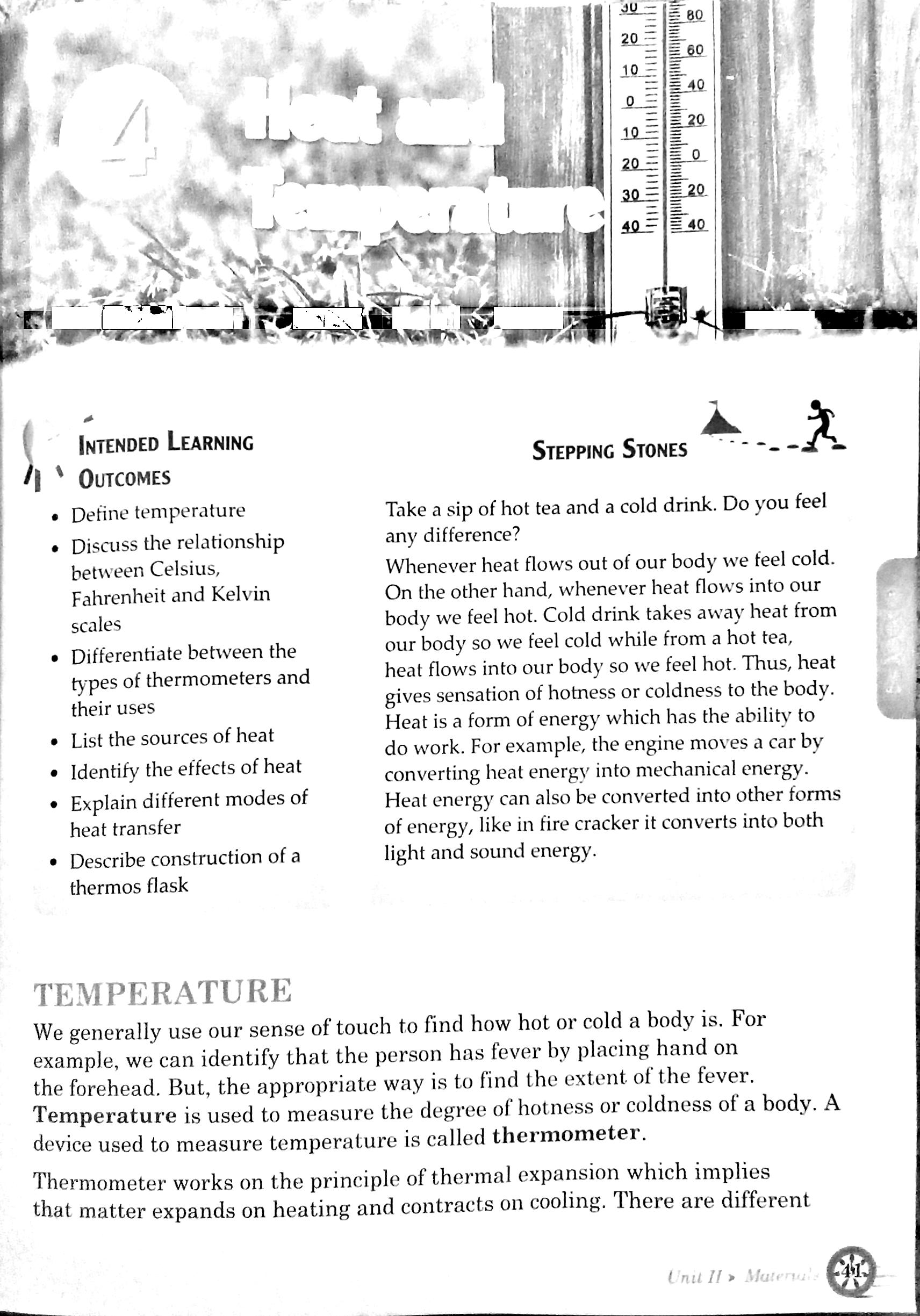What is temperature? Discuss its definition, scales (Celsius, Fahrenheit, Kelvin), sources of heat, types of thermometers, and modes of heat transfer.

Understand the Problem
The question is asking about temperature, including its definition, the relationship between different temperature scales (Celsius, Fahrenheit, Kelvin), sources of heat, types of thermometers, and heat transfer. It discusses how we sense temperature changes through heat flow and provides examples related to everyday experiences, such as drinking hot tea or cold beverages.
Answer
Temperature measures hotness or coldness using Celsius, Fahrenheit, and Kelvin scales. Heat sources include the sun and electricity. Thermometers measure temperature, and heat transfers via conduction, convection, and radiation.
Temperature measures the degree of hotness or coldness using scales like Celsius, Fahrenheit, and Kelvin. It affects heat flow direction. Heat sources include the sun, chemical reactions, and electrical devices. Thermometers measure temperature, while heat transfers via conduction, convection, and radiation.
Answer for screen readers
Temperature measures the degree of hotness or coldness using scales like Celsius, Fahrenheit, and Kelvin. It affects heat flow direction. Heat sources include the sun, chemical reactions, and electrical devices. Thermometers measure temperature, while heat transfers via conduction, convection, and radiation.
More Information
Temperature indicates the average kinetic energy of particles. Celsius is based on the freezing and boiling points of water, while Kelvin is an absolute scale starting at absolute zero. Fahrenheit is often used in day-to-day weather reports.
Tips
A common mistake is confusing temperature with heat. Heat refers to energy transfer due to temperature differences, while temperature is a measure of thermal energy within a body.
Sources
- Temperature - Wikipedia - en.wikipedia.org
- 2.3: Heat and Temperature - Chemistry LibreTexts - chem.libretexts.org
- Temperature | CK-12 Foundation - flexbooks.ck12.org
AI-generated content may contain errors. Please verify critical information